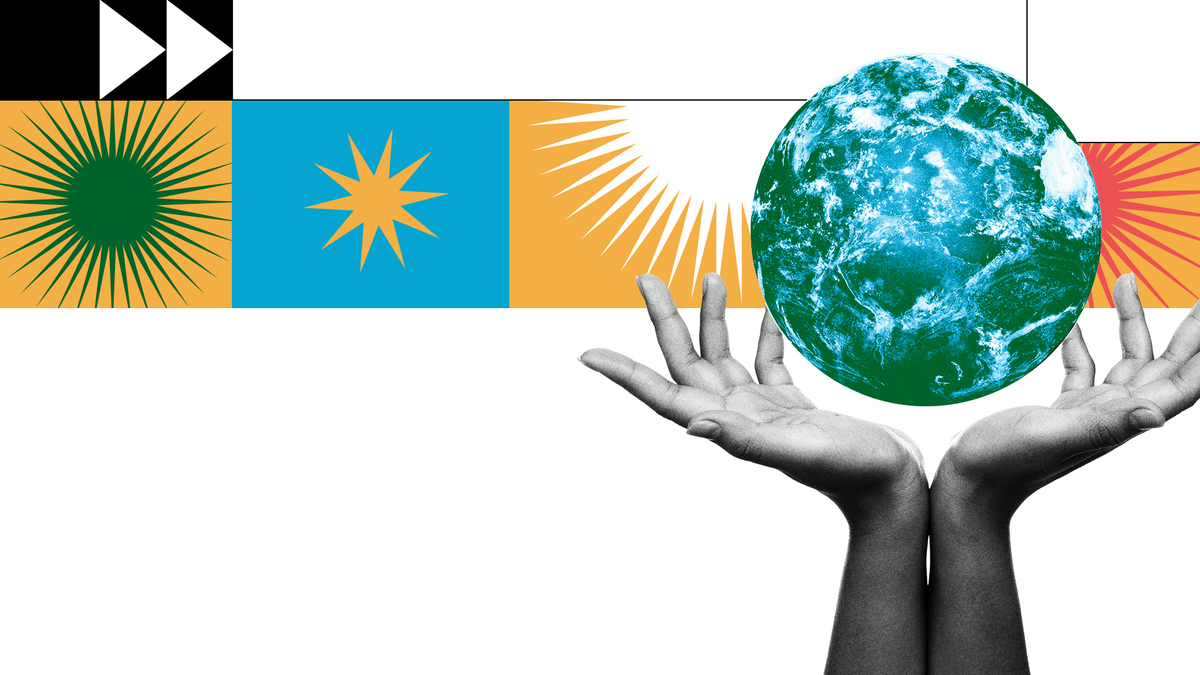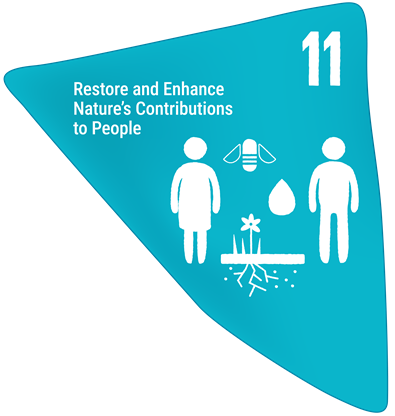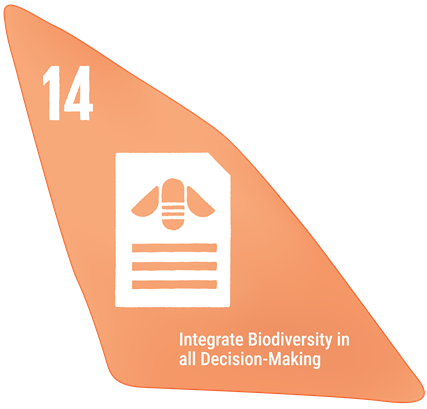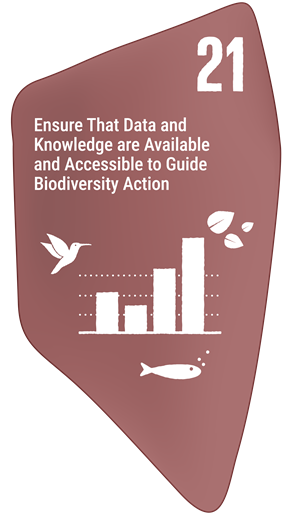
International Mother Earth Day-- 22 April 2024
Biodiversity is the heartbeat of Mother Earth.
However, the triple planetary crisis of biodiversity loss, climate change and pollution is threatening Mother Earth, the achievement of the Sustainable Development Goals and the global vision of living in harmony with nature.
Indigenous peoples and local communities, including youth and children, are at the forefront of protecting Mother Earth but they are also among the most directly affected by these crises.
Mother Earth is clearly urging a call to action.
The Kunming-Montreal Global Biodiversity Framework, or The Biodiversity Plan, recognizes and considers diverse value systems and concepts, including for those countries that recognize them, rights of nature and rights of Mother Earth. The Plan's goals are supported by 23 action targets that address both the direct and indirect drivers of biodiversity loss.
The Plan also acknowledges the important roles and contributions of indigenous peoples and local communities as custodians of biodiversity and as partners in its conservation, restoration and sustainable use. Their traditional knowledge, innovations and practices are crucial to halting and reversing biodiversity loss.
To achieve the goals and targets of The Biodiversity Plan it will take a holistic, whole-of-society approach.
We all have a role to play.
On this International Mother Earth Day, let's:
- pause to cherish and strengthen our relationship with the land, air, water, plants, and animals;
- focus on the ways that Mother Earth provides for our health and wellbeing – physically, mentally, spiritually; and
- take action to protect the planet.
More information:
Article 8(j) - Traditional Knowledge, Innovations and Practices
Related Targets in The Biodiversity Plan
Restore, maintain and enhance nature’s contributions to people, including ecosystem functions and services, such as regulation of air, water, and climate, soil health, pollination and reduction of disease risk, as well as protection from natural hazards and disasters, through nature-based solutions and/or ecosystem-based approaches for the benefit of all people and nature.
Why is this target important?
Nature’s contributions to people, a concept similar to and inclusive of ecosystem services, refers to all the contributions from biodiversity to people’s well-being or quality of life. These contributions take various forms, including material contributions, regulating services and other non-material contributions including spiritually and culturally. As a result of the ongoing decline of biodiversity, nature’s contributions to people are also in decline, with serious implications for human well-being and social cohesion. The restoration, maintenance and enhancement of nature’s contributions to people provides an important rational for the conservation and sustainable use of biodiversity.
Links to other elements of the Biodiversity Plan and other frameworks and processes.
- Actions to reach Target 11 should take into account all of the considerations for implementation identified in section C of the Kunming-Montreal Global Biodiversity Framework.
- Progress towards this target will support the attainment of goals A and B of the Kunming-Montreal Global Biodiversity Framework. Progress towards this target will be facilitated through the actions taken to reach the other targets of the Global Biodiversity Framework, in particular those targets addressing the direct drivers of biodiversity, namely targets help to reach targets 2, 3, 5, 6, 7, 8, 9, 10 and 12.
- Elements of Target 11 were previously addressed under Aichi Biodiversity Target 14.
- Elements of Target 11 are also addressed in the targets of the Sustainable Development Goals, including targets 1.5 and 15.4

Ensure the full integration of biodiversity and its multiple values into policies, regulations, planning and development processes, poverty eradication strategies, strategic environmental assessments, environmental impact assessments and, as appropriate, national accounting, within and across all levels of government and across all sectors, in particular those with significant impacts on biodiversity, progressively aligning all relevant public and private activities, fiscal and financial flows with the goals and targets of this framework.
Why is this target important?
Article 6 (b) of the Convention calls upon Parties, in accordance with their particular conditions and capabilities, to integrate, as far as possible and as appropriate, the conservation and sustainable use of biological diversity into relevant sectoral or cross-sectoral plans, programmes and policies. Such “biodiversity mainstreaming” seeks to ensure that the multiple biodiversity values are duly taken into account in decision- and policy-making of private and public actors, across governments, economic sectors and society more broadly. As many (if not most) activities that rely on biodiversity or have an impact on biodiversity are outside of the remit of biodiversity policies, implementing this target is critical for implementing the objectives of the Convention. Nevertheless, the multiple values of biodiversity are not widely reflected in decision-making. Integrating and reflecting the contribution of biodiversity and the ecosystem services it provides in relevant strategies, policies, programmes, and reporting systems is an important element in ensuring that the diverse values of biodiversity and the opportunities derived from its conservation and sustainable use are recognized and reflected in decision-making
Links to other elements of the Biodiversity Plan and other frameworks and processes.
- Actions to reach Target 14 should take into account all of the considerations for implementation identified in section C of the Kunming-Montreal Global Biodiversity Framework.
- This Target supports the attainment of goals B and D of the Kunming-Montreal Global Biodiversity Framework. Progress towards this target would also help to reach all targets of the Framework by ensuring that biodiversity and its multiple values are reflected in decision-making across all levels of society. However, it would have particularly important impacts on targets 15, 16 and 18
- Elements of this target were previously addressed by Aichi Biodiversity Target 2.
- Elements of Target 14 are also addressed in the targets of the Sustainable Development Goals, including Target 15.9.

Click here for more information about Target 14
Ensure that the best available data, information and knowledge, are accessible to decision makers, practitioners and the public to guide effective and equitable governance, integrated and participatory management of biodiversity, and to strengthen communication, awareness-raising, education, monitoring, research and knowledge management and, also in this context, traditional knowledge, innovations, practices and technologies of indigenous peoples and local communities should only be accessed with their free, prior and informed consent[1], in accordance with national legislation.
***
[1] Free, prior and informed consent refers to the tripartite terminology of “prior and informed consent” or “free, prior and informed consent” or “approval and involvement.
Why is this target important?
All countries need data, information and knowledge to identify threats to biodiversity, and determine needs and priorities, plan and take evidence-based decisions and actions, set benchmarks and monitor and report on progress for the conservation and sustainable use of biodiversity and the fair and equitable benefits arising from the utilization of genetic resources. Accessible biodiversity-related data, information and knowledge are critical for creating baselines, regularly assessing progress and taking necessary action. This issue is cross-cutting, with implications for all the goals and targets of the Kunming-Montreal Global Biodiversity Framework.
Links to other elements of the Biodiversity Plan and other frameworks and processes.
- Actions to reach Target 21 should take into account all of the considerations for implementation identified in section C of the Kunming-Montreal Global Biodiversity Framework.
- This target is relevant to the attainment of all goals and targets of the Kunming-Montreal Global Biodiversity Framework.
- Target 21 addresses issues previously addressed under Aichi Biodiversity Targets 18 and 19.
- Elements of Target 21 are also addressed in the targets of the Sustainable Development Goals, including Targets 14.a, 17.6, 17.7 and 17.18

Click here for more information about Target 21